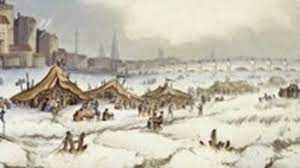Little Ice Age (LIA) : Study

A recent study showed the signature of moist conditions during the Little Ice Age (LIA) from the Western Ghats, India.
- Little Ice Age (LIA) was one of the coldest periods of the past 10,000 years, a period of cooling that was particularly pronounced in the North Atlantic region.
Findings of the study:
- It showed significant variations in rainfall patterns during that age, challenging the conventional notion of a uniformly cold and dry climate with reduced monsoon rainfall during the LIA.
- It suggested that northward movement of the Inter Tropical Convergence Zone (ITCZ), positive temperature anomalies, increased sunspot numbers, and high solar activity could be driving climate change and increased South West Mansoon.
- They attributed the weakest phase of the Indian Summer Monsoon (ISM) across the Indian subcontinent during the LIA, in general, to the southward shift of the ITCZ, resulting from increased northward energy flux across the equator during a cold northern hemisphere.
- The high-resolution palaeoclimatic records generated in the present study could be helpful in developing paleoclimatic models for future climatic predictions and also for scientifically sound policy planning.
- Knowledge and understanding of climate change and Indian Summer Monsoon (ISM) variability during the Holocene could be of immense interest to strengthen the understanding of the present ISM-influenced climatic conditions, as well as of possible future climatic trends and projections.




